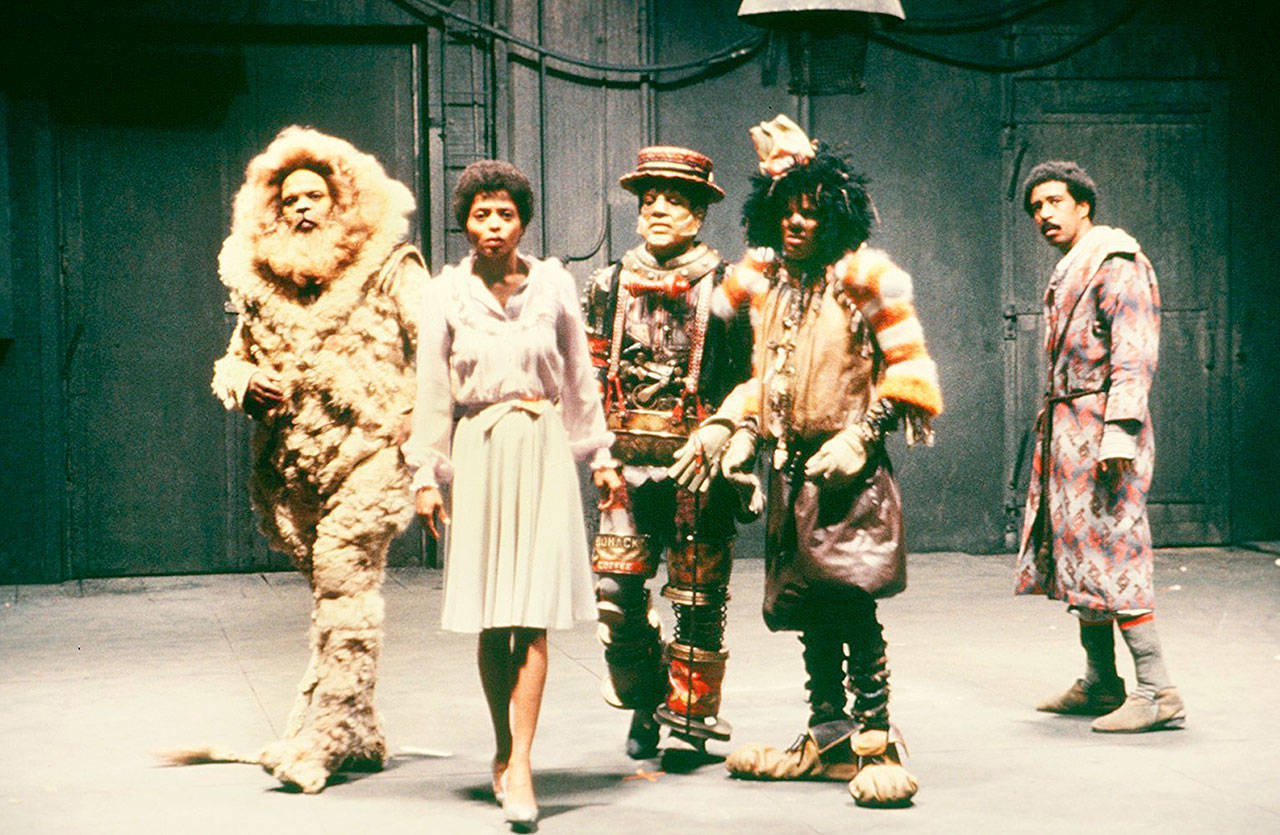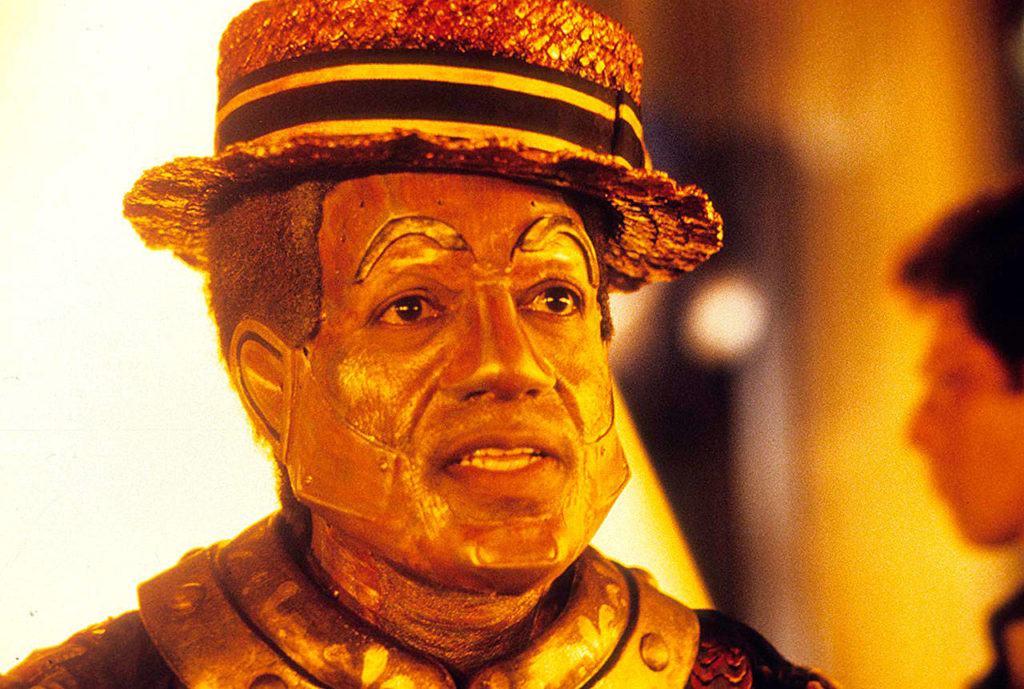By Gerrick D. Kennedy / Los Angeles Times Forty years after its original release, no film has uniquely defined black culture and shaped the framework of a musical genre quite like “The Wiz.”
An adaptation of the groundbreaking Broadway musical — itself a retelling of L. Frank Baum’s classic 1900 children’s fantasy “The Wonderful Wizard of Oz” that became the beloved Judy Garland movie — the Sidney Lumet-directed film had a rapturous soundtrack produced by Quincy Jones, a cast that included Diana Ross, Michael Jackson, Lena Horne, Nipsey Russell, Mabel King and Richard Pryor and an aesthetic firmly rooted in black culture.
For a generation of black Americans, this was the first time they saw people who spoke, sung and moved the way they did in a Broadway production and, later, a big-screen musical, and it has become a kind of rite of passage for the black community.
Everyone remembers their first time experiencing “The Wiz.” If it’s the stage production, that likely came from performing it in high school or seeing a touring troupe tackle it, but the film is the most accessible entry into the all-black retelling of “The Wizard of Oz.” Many of us recall watching it with family during the holidays, huddled around the TV singing the tunes.
What was revolutionary about it, first in the original Broadway production and then amplified by Jones’ work on the splashy film version, was its songbook.
“Grease” had arrived to big screens months earlier, as did “Thank God It’s Friday” (which, like “The Wiz,” was a Motown production), but both pulled from the world of disco and were tailored toward white audiences.
“The Wiz,” however, weaved together gospel, blues, soul and R&B — genres that are unequivocally black creations — and were narratives of the black experience, an especially bold move given Hollywood’s monochromatic palette.
It bombed upon its release on Oct. 24, 1978 (it cost more than it earned, and critics dismissed it as a saccharine imitation of its stage predecessor), but that didn’t matter to audience members who were seeing themselves reflected on screen in ways they hadn’t before.
How it all started
To understand its power, let’s rewind to 1972. It was then that New York disc jockey Ken Harper, inspired by the dominance of the Motown sound, imagined a take of Baum’s epic fantasy that distilled the tale through a black lens.
He got the backing of Fox — in exchange for first option for film rights, publishing rights and album rights — and in 1974 “The Wiz: The Super Soul Musical ‘Wonderful Wizard of Oz’ ” opened in Baltimore, before hitting Broadway the following year.
“The Wiz” weathered a ballooning budget, mixed reviews, technical hiccups, sluggish ticket sales and the constant threat of closure to become a sensation that earned seven Tony Awards, including best musical, and a multimillion-dollar adaptation from Motown and Universal, who grabbed the rights from Fox.
Both the stage and film productions of “The Wiz” have a common theme: the perseverance of the black American dream despite mighty odds. But where the original stage production uses Dorothy’s journey home from the Land of Oz to explore slavery, emancipation, the great migration and faith, the film updates it to a post-civil rights era.
Rural, turn-of-the-century Kansas in Baum’s version became contemporary Harlem. Now our heroine is an introverted Harlem schoolteacher that has never been south of 125th Street. Emerald City is a slick urban core brimming with temptations, and the Winkies are, in effect, the poor working class stuck under the thumb of a slave-driving tyrant.
“The Wiz” is foremost a story of racial liberation, and an early piece of Afro-futurism — the combination of science fiction, fantasy, magic realism and ancient African tradition that critiques historical events or envisions a black future, inspiring such recent groundbreaking films as “Get Out” and “Black Panther” — but what has cemented its cult status is the music and movement seen onscreen.
Its dance numbers incorporated traditional movement from the African diaspora with ballet, jazz and modern movement that has defined black dance — the “Emerald City Sequence” alone has informed everything from the black queer ballroom scene to Béyonce, and the music has shaped R&B for decades.
The original production launched the formidable Stephanie Mills (the original Dorothy, she lost the film role after Ross pulled a power play with the studio) to R&B stardom. It was the first time Jones collaborated with Jackson, then a 19-year-old looking to break away from the Motown sound. “Off the Wall” was released 10 months after “The Wiz,” the album inspired by Jackson’s time in New York frequenting Studio 54 and getting exposed to percolating hip-hop scene during downtime from filming.
When Whitney Houston made her television debut in 1983 on “The Merv Griffin Show,” she sang the musical’s soaring number “Home” — her mother, gospel legend Cissy Houston, has an uncredited role in the film — and the internet is rife with a litany of talents covering the song when they were young, most notably Jazmine Sullivan and Béyonce, who kicked off her provocative Coachella performance with a wink to “The Wiz” (those opening horns are lifted right from the “Emerald City Sequence,” a definitive performance in the film).
Béyonce and Sullivan — like this writer — are part of a generation not yet alive when “The Wiz” originally debuted. It was a cornerstone of our parents’ teenage years in which they were seeing expressions of themselves through a wave of blaxploitation films, and has been a definitive experience for black theater kids for decades now.
TV’s live version
It made sense, then, that NBC decided to mark the original production’s 40th anniversary in 2015 by mounting a live TV event that doubled down on the show’s affirmation of black life at a moment when antiblack rhetoric and violence against black bodies fill news cycles.
While “Home” is the tune that has undoubtedly cemented the lasting legacy of “The Wiz,” a more potent flourish of the musical’s greatness comes through the jubilant “Everybody Rejoice.”
The Luther Vandross-penned song comes after our heroine has killed the tyrannical Wicked Witch of the West, freed the Winkies and saved her new pals Tinman, Cowardly Lion and Scarecrow.
It’s a spirited celebration of freedom, but “The Wiz” has always meant something else for us and “Everybody Rejoice,” like “You Can’t Win,” “Don’t Nobody Bring Me No Bad News” and the film’s other centerpiece, “Ease on Down the Road,” feels more like a rallying cry culled from the tradition of Negro spirituals.
Listen closely and you can hear Nipsey Russell proudly shouts “Free at last!” — a literal call back to the mighty words of the Rev. Martin Luther King Jr.
The lyrics of “Everybody Rejoice” feel as vital today as it did then.
“We always knew that we’d be free somehow, In harmony / And show the world that we’ve got liberty … Freedom, you see, has got our hearts singing so joyfully … Can’t you feel a brand new day?”
Talk to us
> Give us your news tips.
> Send us a letter to the editor.
> More Herald contact information.


























